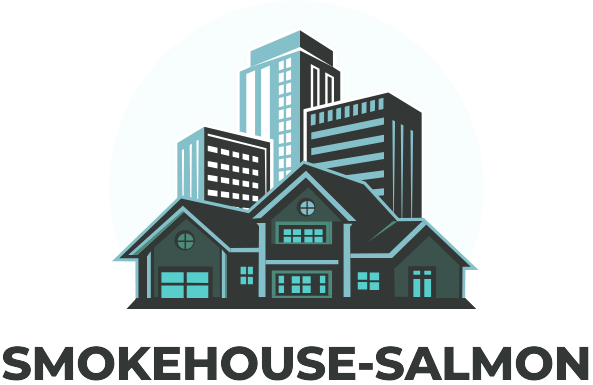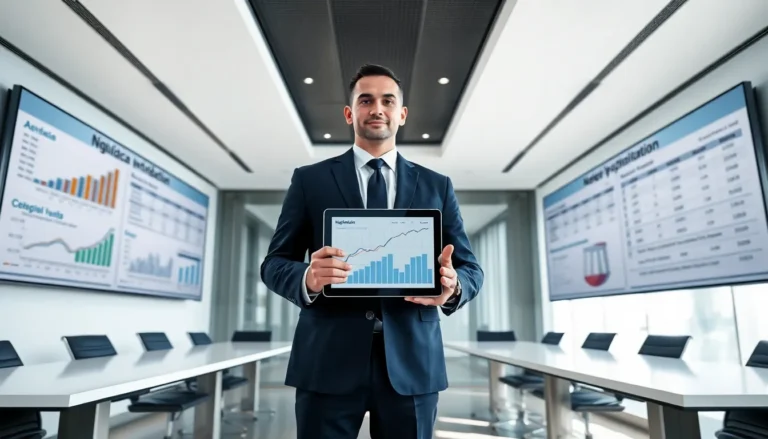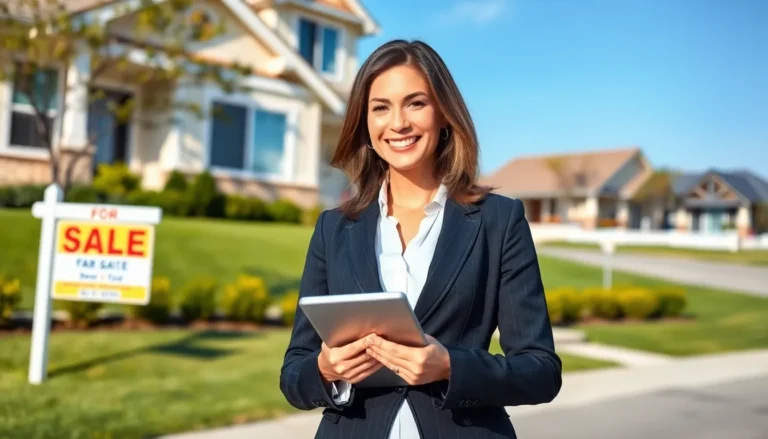As the world shifts towards sustainability, green real estate is gaining traction among buyers and investors alike. This innovative approach not only emphasizes eco-friendly building practices but also enhances property value and appeal. With a growing awareness of environmental issues, more people are seeking homes and commercial spaces that align with their values.
Green real estate encompasses a range of features, from energy-efficient appliances to sustainable materials and renewable energy sources. By investing in these properties, individuals contribute to a healthier planet while enjoying long-term savings on energy costs. Understanding the benefits and trends in green real estate can empower buyers to make informed decisions and embrace a more sustainable lifestyle.
Table of Contents
ToggleUnderstanding Green Real Estate
Green real estate encompasses properties designed with environmental considerations and sustainability practices. It represents a shift towards eco-conscious living, aligning with the growing emphasis on reducing ecological footprints.
Definition and Concept
Green real estate refers to properties that integrate sustainable building practices and materials. Features include energy-efficient appliances, renewable energy sources, and environmentally friendly materials. These elements promote resource conservation, reduced carbon emissions, and enhanced indoor air quality. Certification programs like LEED (Leadership in Energy and Environmental Design) help define and validate a property’s sustainability efforts.
Importance and Benefits
Green real estate provides multiple advantages that benefit both individuals and communities.
- Energy Savings: Many green properties utilize energy-efficient systems, reducing utility costs by up to 30%.
- Increased Property Value: Properties with eco-friendly features often appreciate faster and attract higher market demand.
- Health and Well-being: Sustainable materials and design contribute to healthier living environments, decreasing risks of allergies and health issues.
- Tax Incentives: Many jurisdictions offer tax benefits for owning energy-efficient properties, improving overall financial returns.
- Market Demand: As awareness of environmental issues rises, buyers increasingly prefer sustainable homes, driving demand and long-term market viability.
Green real estate represents a forward-thinking approach to property development, aligning economic benefits with environmental responsibility.
Key Features of Green Real Estate

Green real estate incorporates various features designed to promote sustainability and reduce environmental impact. Understanding these features enhances the appreciation of eco-friendly properties.
Sustainable Materials
Sustainable materials include bamboo, recycled metal, and reclaimed wood. These materials minimize resource depletion while promoting responsible sourcing. Properties constructed with sustainable materials often exhibit lower carbon footprints and contribute to healthier living environments. Additionally, using local materials reduces transportation emissions, enhancing overall sustainability.
Energy Efficiency
Energy efficiency represents a cornerstone of green real estate. Features like high-performance insulation, energy-efficient windows, and smart thermostats significantly lower energy consumption. Many green properties utilize Energy Star-rated appliances that enhance efficiency while maintaining performance. Renewable energy sources, such as solar panels, further contribute to reduced reliance on fossil fuels and lower utility costs for homeowners and businesses.
Water Conservation
Water conservation strategies play a vital role in green real estate. Efficient irrigation systems, rainwater harvesting, and low-flow fixtures minimize water usage in residential and commercial spaces. Green roofs can also aid in reducing stormwater runoff while improving insulation. Implementing these practices helps conserve water resources and lowers costs associated with water consumption.
The Role of Technology in Green Real Estate
Technology plays a critical role in the advancement of green real estate. It enhances energy efficiency, sustainability, and overall building performance through smart systems and renewable energy sources.
Smart Home Integration
Smart home integration significantly improves energy management in green properties. Features like smart thermostats, advanced lighting systems, and automated energy monitoring allow residents to optimize energy usage. Smart sensors adjust heating, cooling, and lighting based on occupancy and time of day, minimizing waste. Homeowners can remotely control these systems via smartphone apps, maximizing convenience and efficiency. Systems that use the Internet of Things (IoT) also enable real-time tracking and reporting of energy usage, facilitating informed decision-making.
Renewable Energy Solutions
Renewable energy solutions are essential in green real estate. Solar panels and wind turbines provide sustainable power sources, reducing reliance on fossil fuels. Photovoltaic systems convert sunlight into electricity, lowering energy bills and enhancing property value. Additionally, geothermal heating and cooling systems utilize stable underground temperatures to reduce energy consumption significantly. Battery storage systems store excess energy for later use, enhancing reliability and efficiency. Incorporating these technologies into new constructions boosts sustainability and aligns with green building standards, appealing to environmentally conscious buyers.
Market Trends and Statistics
The green real estate market experiences significant growth, driven by increasing environmental awareness and consumer demand. Current statistics illustrate this trend, highlighting the effectiveness of sustainable property practices.
Growth of Green Real Estate Market
The green real estate market shows remarkable expansion, with a projected growth rate of 15% annually through 2028. A report from the Global Alliance for Buildings and Construction indicates that green building construction accounted for 36% of all global construction activity in 2021. Additionally, investments in green real estate reached $193 billion in 2022, representing a substantial increase from previous years. Various new projects now incorporate sustainable design principles, such as LEED certification, enhancing long-term value for developers and investors alike.
Consumer Preferences
Consumer preferences significantly influence the green real estate market. Surveys indicate that 77% of homebuyers consider energy-efficient appliances as key features when purchasing properties. Furthermore, 70% of respondents express a willingness to pay a premium of up to 10% for eco-friendly homes. The desire for healthier living environments drives the popularity of sustainable features, such as improved ventilation and non-toxic materials. With millennials increasingly entering the housing market, green real estate aligns with their values, fostering further demand for sustainable living options.
Challenges in Green Real Estate Development
Green real estate development faces several key challenges that can hinder progress. Understanding these obstacles is essential for stakeholders aiming to navigate the complexities of sustainable building practices.
Cost and Financial Barriers
Cost and financial barriers significantly impact green real estate development. Initial investment costs for materials and technologies often exceed those of traditional construction. Sustainable materials, such as reclaimed wood or insulation, frequently carry higher upfront prices. Additionally, advanced energy-efficient systems, including solar panels, require substantial capital. Financing options for green projects may also be limited, affecting developers’ ability to secure necessary funds. Despite long-term savings in energy and maintenance costs, the initial expense can deter stakeholders from pursuing green projects.
Regulatory Hurdles
Regulatory hurdles also pose challenges to green real estate initiatives. Complex building codes and zoning regulations may not accommodate innovative sustainable practices. Local governments might lack clear guidelines or incentives for green construction, creating uncertainty for developers. Additionally, accessing green certifications—such as LEED or ENERGY STAR—can involve lengthy approval processes and extensive documentation. These regulatory complexities may discourage investment in green properties, slowing the transition towards sustainable development in the real estate sector.
Green real estate represents a significant shift towards sustainable living and responsible investment. As awareness of environmental issues grows so does the demand for eco-friendly properties that offer both comfort and efficiency. The integration of innovative technologies and sustainable materials not only enhances property value but also contributes to a healthier planet.
With a promising market trajectory and increasing consumer interest in energy-efficient homes, the future of green real estate looks bright. By embracing these principles, buyers can make informed choices that align with their values while reaping long-term financial benefits. The journey towards sustainability in real estate is just beginning, and its impact will be felt for generations to come.




